Wouldn’t it be great if every single person who clicked on one of your articles read it from start to finish, unable to pull their eyes away from the screen?
We think we both know the answer to that question.
To achieve this goal, however, you must master the art of writing intriguing introductions.
Wait a second, you’re thinking. Writing introductions? Isn’t that kind of a small detail of a 2,000-word article? Unfortunately, no. Your article intro is not a small detail.
The introduction to your article is often the difference between engaging readers and having a bounce rate high enough to make a click-baiter cringe.
Think about it. If you don’t grab your readers right away, you’ll lose them.
You went through all that work of writing a killer article, right? You worked hard at it. You spent a lot of time on it. You did a ton of research but if your introduction sucks, your efforts will be all for nothing. You’ll have lost before you even got started!
If you want to write great content, improve the success of your marketing campaigns, and increase the loyalty of your fans, you must master writing introductions.
Let us show you how.
5 Steps to Write an Article Introduction
Here’s how you write a blog introduction that doesn’t stink:
- Master the opening line
- Have something unique to say
- Keep it simple
- Speak directly to the reader
- Explain what the article is about
Step 1 – Master the Opening Line
To have a strong introduction, you need to open with a strong first sentence.
The millisecond your reader hits the page, they have an extremely high likelihood of leaving the page.
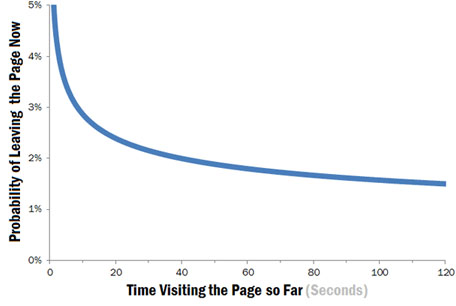
The first sentence has one single purpose: to entice the reader to read the next sentence. In doing so, it sets the tone for the rest of the article, hooking the reader in, one step at a time.
If you fail at this, you readers won’t scroll. That’s why its often best to have your first sentence act as a hook to engage a readers attention. The easiest way to do this is to cite a relevant fact or statistic that you know the reader will be interested in that relates to your article’s topic.

And if they don’t scroll, they won’t engage.
Check out this article by Dilbert author Scott Adams to see how the first sentence is done.

He writes this:
I went from being a bad writer to a good writer after taking a one-day course in “business writing.”
That’s a great opening line.
Why? Because it makes you want to know more!
- How did he become a good writer?
- What did he learn?
- Could I benefit from it too?
Adams nailed it. He drew us in by making us ask questions.
If you don’t know how to craft an intriguing first sentence, the remaining words of your article will be a complete waste.
Luckily for you, with a few simple tricks, writing a phenomenal first sentence can be quite easy.
The first thing to keep in mind is that you want to keep the first sentence short. This makes it easy for the reader to digest the first bits of information and prevents them from losing interest quickly.
But there is more to it than that.
You have to make sure that the first sentence grabs the reader’s attention and holds it for the rest of the article.
Here are a couple of tried-and-true tactics that make for super compelling first lines.
Ask the reader a question
This is an easy way to get the reader’s attention and get them engaged without a whole lot of effort on your part.
For example, if you are writing an article on quitting your job and starting your own company, you could open with the question: “Did you know that almost 70% of Americans report being actively disengaged from their careers?” Remember we mentioned using a statistic earlier?
Why does this work?
It has to do with the brain’s “limbic reward system.”

When this system is activated, dopamine is released. And dopamine gives us a sense of reward and pleasure.
When we are intrigued by a question, i.e., experience a sense of curiosity, the limbic reward system lights up. And that’s why we want to keep reading—it’s rewarding to satisfy curiosity.
Here’s an example. Writer Olga Khazan asks a question that’s on everyone’s mind, causing the reader to be instantly interested:
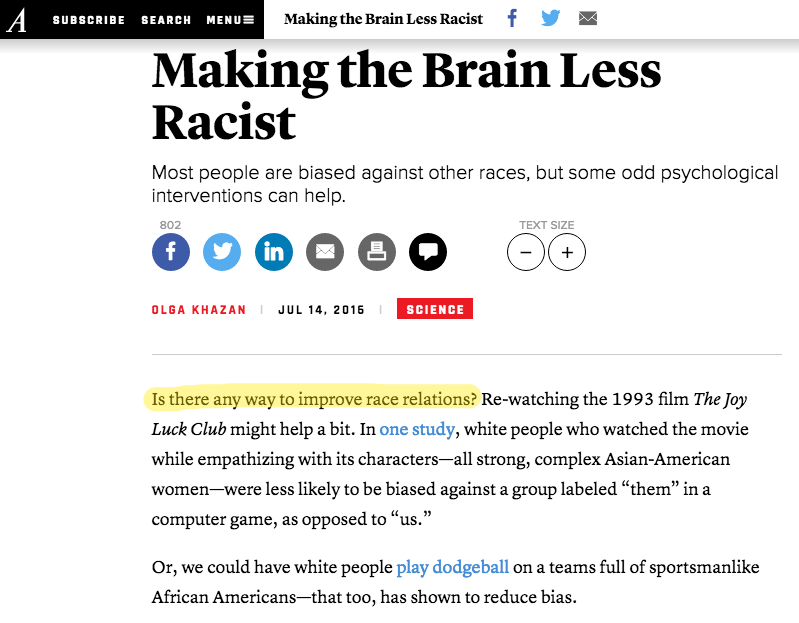
We want to know the answer to that question, so we keep reading.
That’s why a question is a great opening line. You can even use the question as the article title.
Tell a story
The brain also lights up when it encounters a story.
According to the theory of neural coupling, certain portions of the brain are activated when a reader thinks about the same mental and physical activity that a character in a story is doing.
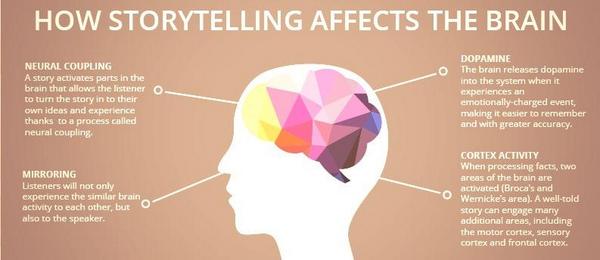
James Clear usually starts his blog articles with a story, often a true story.
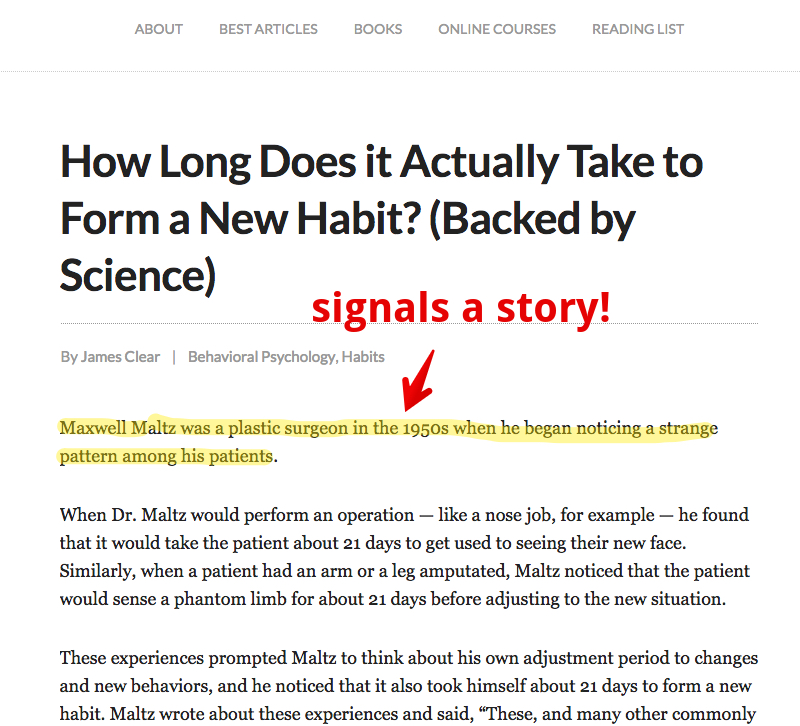
The story makes his readers interested in the article and keeps them reading to the very end.
Use a shocking quote
Another great way to start your article is to use an attention-grabbing quote.
Let’s say you are writing an article on world travel. A great way to introduce the article would be with the quote from Helen Keller:
“Life is a daring adventure or nothing at all.”
Using a quote like this will grab the readers attention and make them want to learn more.
Tell the reader to imagine
Sparking the imagination is an instant way to draw the reader into the experience of the article.
Notice how this article begins:
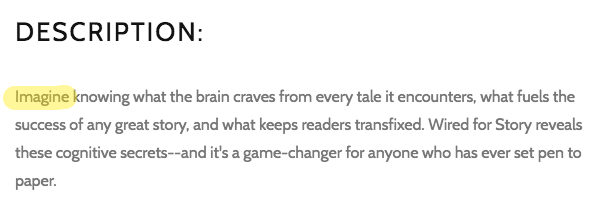
The reader tries to obey the imperative by imagining. This effort compels the reader to read further, drawing them into the article.
Writers for The Atlantic are experts at their craft. This writer does the same thing—asking the reader to imagine.

Share an interesting fact
In a day and age when the Internet is so rife with untrustworthy information and fraudulent “gurus,” people are skeptical. They have every reason to be.
Opening your article with a relevant fact or statistic is a great way to establish trust and authority from the first sentence and let readers know you’ve done your research — like we said before.
Step 2 – Have Something Unique to Say
Okay, so you’ve crafted an excellent first sentence, and you have your reader’s interest.
Now what?
Now, you have to hold that interest by having something interesting and uncommon to say.
Very few people take the time and energy to regularly produce new, thought-provoking content. If you do, you’ll set yourself apart from the herd in a big way.
Forget re-purposing of old articles or rewriting stuff from other people’s websites. If you want to have the reader’s respect and attention, you have to say something they’ve never heard before.
Unfortunately, a lot of the stuff you read today has been regurgitated 28 times before.
Let’s imagine you run a travel blog. Based on our advice, you write a number of 3,000-word comprehensive “How-To Guides.”
Whenever a reader opens your guide on financing their way around the world trip, they’ll expect to read all about airline rewards programs, frugality, and credit card points.
And that information is great, but it is also very generic.
A better introduction would be something like this:
How would you like to save up enough money in the next 6 months to spend all of 2017 traveling the world?
That would be pretty epic, right?
Well, this is entirely possible, and in today’s article, we’re going to show you how you can do this.
It’s not by skipping your morning latte or spending thousands of dollars with your credit cards on a few hundred miles either.
We’re going to show you how you can create a life of mobility and freedom by leveraging the skills you already have, tactically selecting your destinations, and using a little known tax secret that will save you thousands of dollars!
Sound good? Let’s get to it.
It’s hard to be different. We realize that.
Sometimes, in order to create unique stuff, we simply have to work harder, think longer, and research more than our competition.
Here are some ways you can develop that unique voice in your article introduction:
- Share a personal story or fact. You’re the only you there is. You can share a story or experience no one else can. One way to tell such a story is to write, “If you know me…”
- Get your emotions in it. People have an emotional reaction to emotions. When we convey our emotions in our writing, people tend to respond. Besides, emotion is also a unique and personal thing. How do you communicate this in an introduction? Easy: “Want to know how I feel about it? I feel….”
- Share your goals or vision. If you have a guiding goal or vision for life, you can communicate this in your introduction. “That’s one of the reasons we wrote this post. Our goal in life is to…”
- Make a promise. A promise is a personal and attention-grabbing thing. Give your readers a promise, and it will secure their loyalty and their interest. “We promise that we’ll do our dead-level best to….”
Unique isn’t easy. But it’s worth it.
Step 3 – Keep it Simple
We live in a world where most people have an attention span of only a few seconds.
Apparently, our attention span is getting shorter!
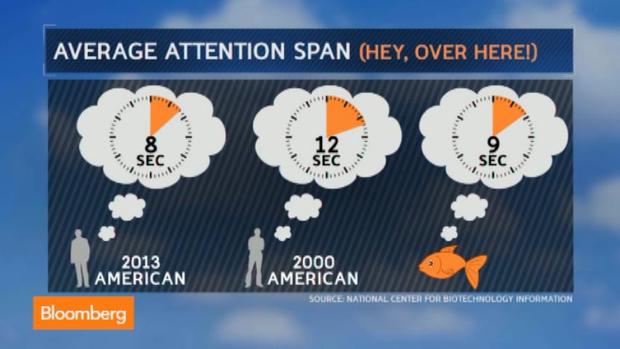
After a few seconds, we get bored and move on to the next shiny object.
If you want your readers to make time in their days to read what you have to say, make sure you present things as simply as possible.
Longer articles, of course, deserve longer introductions. But it’s important to respect people’s time and attention. You can’t change what is (people’s short attention spans) by writing a long introduction based on what should be (longer attention spans).
Avoid rambling about how great your information is, and just share it already!
Step 4 – Speak Directly to the Reader
Whenever you are writing educational material for other people, you want to use the word “you” as much (and as naturally) as possible.
In this article, We’ve used some variation of the word you more than 100 times. Why? Because we’re talking to you! We want you to know this information. We want you to benefit from it.
By emphasizing the word “you” in your article, you show the reader you are directly addressing them and their situation and not just writing a generic article to the general populace.
But there’s another side to this. I should refer to myself as well. My goal is to convey a personal feel to this article. After all, it’s me talking to you, right? So it’s only natural that I would refer to myself too — although more sparingly.
Step 5 – Explain What the Article is About
The point of an introduction is exactly that: to introduce the content that will be presented in an article.
We cannot tell you the number of times online articles left us confused even after we had read a few of their paragraphs.
We couldn’t tell whether the authors were teaching us how to run successful Facebook ads, or telling us a weird story about their childhood.
That’s why its crucial to take a few sentences, and clearly explain what the article is going to cover without giving away too many details.
This will build suspense around the subject matter while still letting your audience know what they may be in for.
A great example of this comes from the Buffer blog. Notice how the introduction poses a question and then proposes to answer that question.
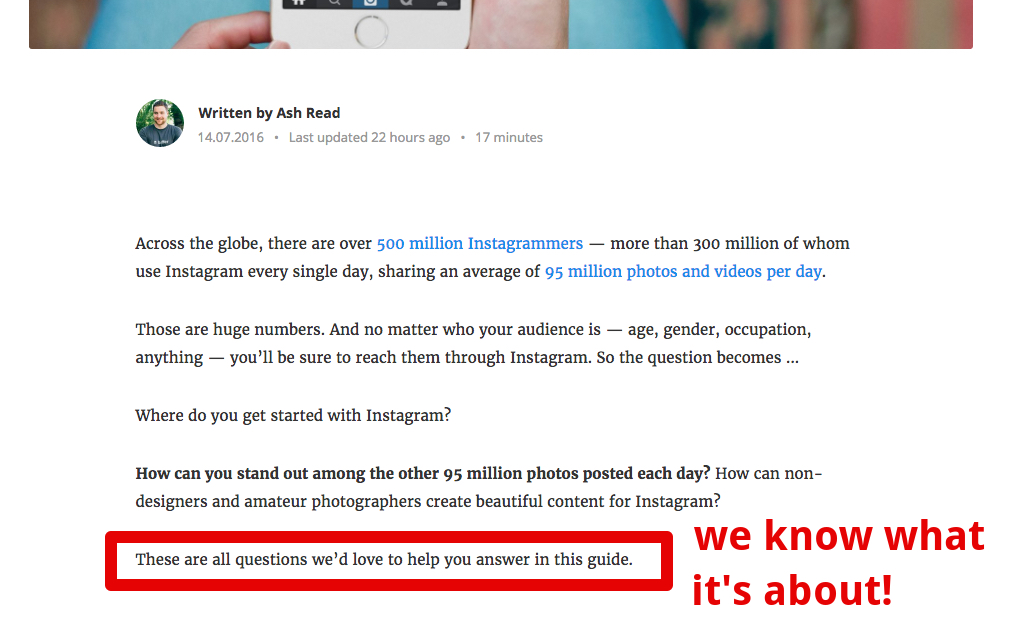
Your curiosity stays high, but the introduction sets the stage.
Explain the importance of the article
Once you’ve explained what the article is, now it’s time to explain why people should care.
Everyone on the Internet approaches every new piece of information with a simple question: “What’s in it for me?”

If you want to write introductions that hook the reader and help your content go viral, you have to master the art of explaining what the reader stands to gain from the information you are sharing.
How will it benefit your readers’ lives? How will it solve a problem they are facing? How will it cure a pain they are feeling?
If you understand how to quickly and efficiently answer these questions, you’ll keep your readers glued to your article till the last word.
Conclusion
Few things can make or break your article as easily as an introduction.
If you can master the art of the first few paragraphs, you’ll be able to increase reader engagement, improve sales, and earn a reputation as a phenomenal writer.
It’s not an easy skill to master, but like many things in Internet marketing, it’s fairly straightforward.
If you put in the work, you’ll get results.
